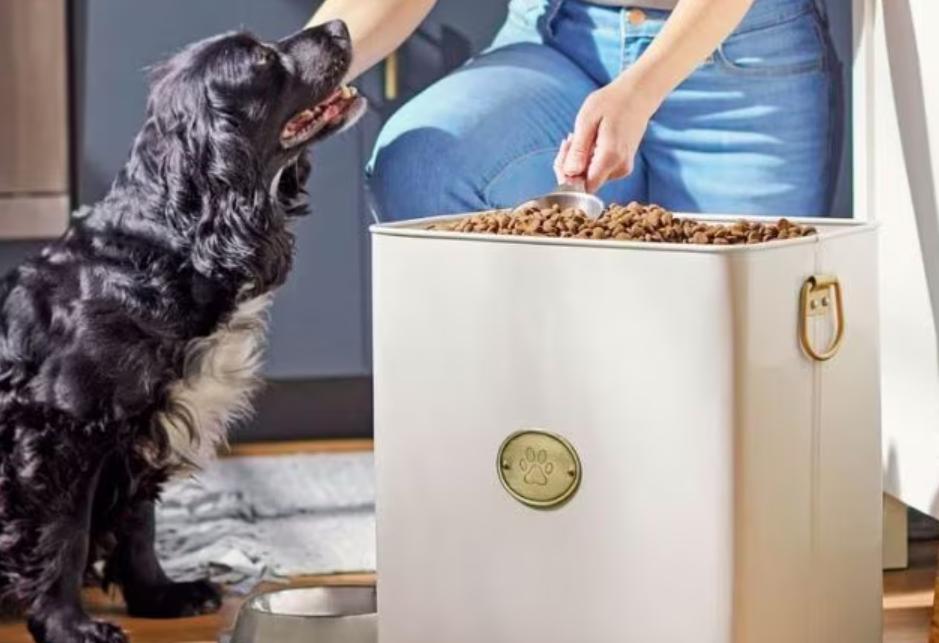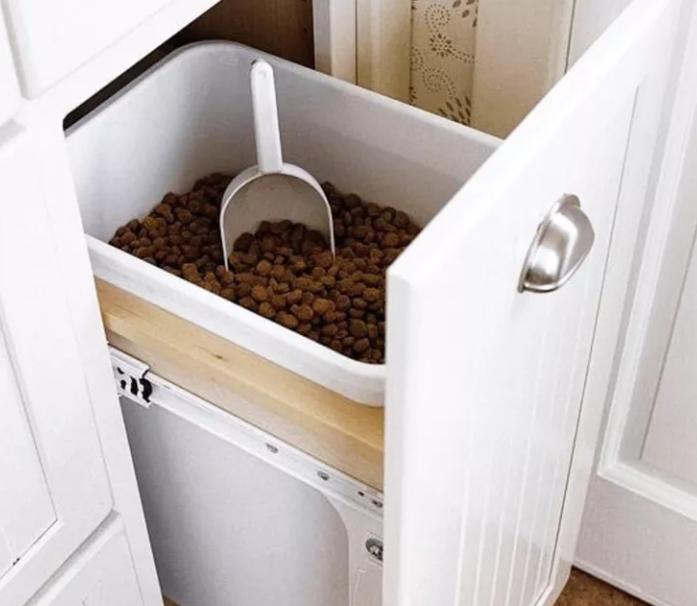Storing dog food correctly is vital for maintaining its freshness and ensuring your dog’s safety. Many pet owners don’t realize that improper storage can lead to nutrient loss, spoilage, and even contamination, which could harm your pet’s health. This guide provides essential tips on how to store dog food properly, ensuring it remains fresh and nutritious for as long as possible. By following these best practices, you can keep your pet’s food safe from spoilage and contamination, ultimately protecting their health. Proper storage not only preserves the food’s quality but also ensures that your dog receives all the nutrients they need from their meals, helping them stay healthy and happy.

Why Is It Important to Store Dog Food Properly?
Maintaining Freshness and Nutritional Value
Maintaining the freshness of dog food is essential to preserve its nutritional value. Nutrients like vitamins and minerals can degrade quickly if the food is exposed to air, light, or moisture. When dog food is stored in an airtight container, it helps lock in freshness by protecting the food from these elements. This is particularly important because fresh food retains its taste and nutritional benefits, ensuring your dog gets the most from their diet. By keeping the food sealed and away from harmful environmental factors, you also prevent it from becoming stale, which can lead to your dog refusing to eat it. Fresh, well-stored food contributes to your dog’s overall health and well-being by providing consistent, high-quality nutrition.
Preventing Contamination and Spoilage
Proper dog food storage is crucial to prevent contamination and spoilage. Exposure to air, moisture, and heat can lead to the growth of bacteria and mold, which can be dangerous for your dog. Airtight containers are key to keeping contaminants out and maintaining the integrity of the food. These containers also protect the food from pests such as insects and rodents, which can carry diseases. Additionally, by storing the food in a cool, dry place, you reduce the risk of spoilage, which can cause the food to lose its flavor and nutritional value. Preventing contamination is not just about keeping the food safe from external threats; it’s also about ensuring that your dog eats fresh, healthy food every day, reducing the risk of health issues caused by spoiled or contaminated food.
What Are the Best Containers to Store Dog Food?
Airtight Containers vs. Original Packaging
Choosing between storing dog food in its original packaging and using an airtight container is important for maintaining freshness. Original packaging is often designed to keep the food fresh until it’s opened. However, once opened, the packaging may not be as effective at keeping out air and moisture, which can lead to spoilage. Airtight containers, on the other hand, provide a more secure environment by sealing out air and moisture, which helps in preserving the food’s freshness for a longer period. These containers are also more effective at keeping pests away. If you prefer to keep the food in its original packaging, consider placing the entire package inside an airtight container for added protection. This method combines the benefits of the original packaging with the enhanced security of an airtight container, ensuring the food remains fresh and safe for your dog to consume.
Using Glass, Plastic, or Metal Containers
The material of the storage container plays a significant role in how well the dog food is preserved. Glass containers are an excellent choice because they are non-porous, meaning they do not absorb odors or flavors, and they keep out air effectively. Plastic containers are lightweight and convenient but be sure to use BPA-free options to avoid chemical leaching into the food. Metal containers, such as those made of stainless steel, are durable and prevent light from reaching the food, which can help in preserving its freshness. Each material has its benefits, but the key is to ensure that whichever container you choose, it should be airtight. Keeping the dog food in a sealed container made from these materials will protect it from moisture, air, and pests, ensuring that your dog’s food remains fresh and safe for longer periods.
How to Store Dog Food to Maximize Shelf Life?
Proper Storage Temperature and Humidity
Maintaining the right storage conditions is essential for extending the shelf life of dog food. Dog food should be stored at a consistent temperature, ideally below 80°F (27°C), to prevent the fats in the food from becoming rancid and losing nutritional value. Humidity control is equally important, as high humidity levels can lead to moisture buildup, which encourages mold growth. Storing the food in a cool, dry place, such as a pantry or cupboard away from direct sunlight and heat sources, helps maintain the ideal conditions. Avoiding temperature fluctuations and keeping the food sealed tightly also helps in preserving its freshness. By paying attention to both temperature and humidity, you can ensure that the dog food remains safe and nutritious for as long as possible, reducing waste and keeping your pet’s diet consistent.

Storing Dry Food vs. Wet Food
Dry dog food and wet dog food have different storage needs, and understanding these differences is key to preserving their quality. Dry food should always be kept in an airtight container to protect it from moisture and contaminants. After each use, seal the container tightly to prevent air from getting in, which can cause the food to go stale. Wet dog food, once opened, should be stored in the refrigerator and used within a few days. Keeping wet food covered with a lid or plastic wrap will help maintain its freshness. Unopened cans of wet food can be stored in a cool, dry place, just like dry food. By following these storage practices, you can ensure that both types of dog food remain fresh, safe, and nutritious for your pet.
Can You Freeze Dog Food? Best Practices Explained
Benefits and Drawbacks of Freezing Dog Food
Freezing dog food is an effective method to extend its shelf life, especially when you have large quantities. The low temperatures slow down the degradation of nutrients and prevent bacterial growth, keeping the food safe for extended periods. However, freezing also has its drawbacks. For instance, the texture of wet dog food can change after thawing, making it less appealing to some dogs. Additionally, the process of freezing and thawing can cause a slight loss in nutritional value, particularly if done repeatedly. It’s also important to note that not all dog foods freeze well, especially those with high moisture content. Therefore, freezing should be done in moderation and only for food that you plan to use within a reasonable time frame. Understanding these benefits and drawbacks can help you decide whether freezing is the best option for storing your dog’s food.
Steps to Freeze and Thaw Dog Food Safely
When freezing dog food, it’s essential to do so properly to maintain its quality. Start by dividing the food into meal-sized portions and placing them in airtight containers or freezer bags. Label each container with the date to keep track of how long it’s been frozen. When you’re ready to use the food, thaw it in the refrigerator for several hours or overnight. This slow thawing process helps maintain the food’s texture and prevents bacterial growth. Avoid thawing dog food at room temperature, as this can lead to rapid bacterial growth, making the food unsafe for your dog. Once thawed, wet dog food should be consumed within a day or two, while dry food can last longer if kept in a sealed container. Always inspect the food for any signs of spoilage before feeding it to your dog to ensure it’s safe and nutritious.
Conclusion
Knowing how to store dog food properly is crucial for maintaining its freshness and ensuring the safety of your pet. By following best practices, such as using airtight containers, storing the food at the right temperature, and considering freezing when necessary, you can extend the shelf life of your dog’s food and protect its nutritional value. Proper storage not only preserves the quality of the food but also ensures that your dog receives all the essential nutrients they need for a healthy life. Avoiding common storage mistakes and understanding the importance of these practices will help you provide the best care for your pet, ensuring that every meal is as fresh and nutritious as possible.
FAQ
How long does dog food stay fresh after opening?
Dog food can stay fresh for several weeks if stored in an airtight container in a cool, dry place. Wet food should be refrigerated and used within a few days.
Is it safe to store dog food in the garage?
Storing dog food in the garage is not recommended due to temperature fluctuations and potential pest exposure. It’s better to store it indoors in a controlled environment.
Can I store dog food in the refrigerator?
Yes, wet dog food should be stored in the refrigerator after opening. Dry food can also be stored in the fridge but is typically fine in a cool, dry place if sealed.
